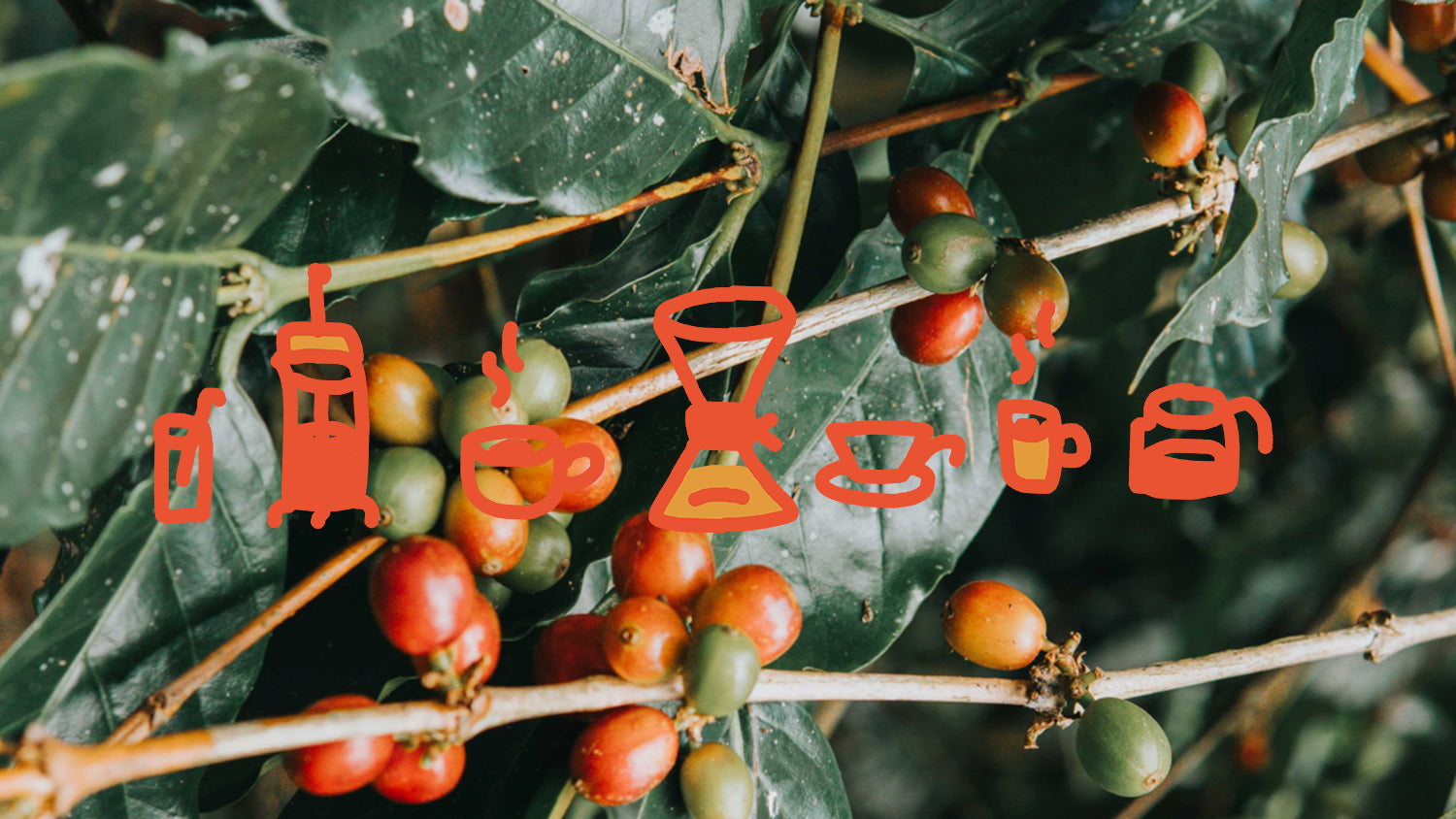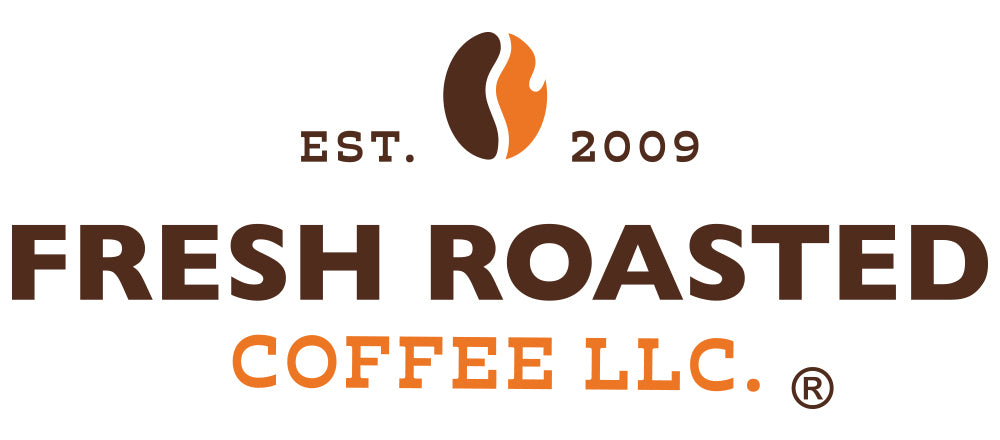The Best Brew Methods for Every Origin

Before we get into it, these are just our preferred methods for brewing each origin. This is how we (mostly me (Christopher) and Roastmaster Dave) make coffee in the office, lab, and at home. We're not saying it's the only way to do it. We're saying...
Brew Coffee How You Want
One of the most beautiful things about coffee is that it's subjective. You may find that Haitian Blue shines as espresso or Panama makes a mean cold brew, and that's great. There's no correct way to brew a coffee. If you like it, that's all that matters. We also know that specialty coffee can be intimidating. There's so much more to consider nowadays than there was when all you had to do was pluck a plastic tub off the shelf, brew a pot, and choke it down, all the while saying, “well, it's coffee.” It's not just coffee anymore. Roasters are sourcing delicious Fair Trade, direct trade, Rainforest Alliance, and organic coffees that benefit both the producer and the planet. Long dead are the days of not knowing what you're drinking or what effect it has.
With all this consciousness comes more freedom to experiment, so why not play around? You are the only limitation in your coffee journey. Go nuts and enjoy whatever coffee you want however you want it. It's all experience in the end.
How We Like To Brew Coffee
When we first hit the specialty scene over a decade ago, we were only roasting eight single-origin coffees. Now, we source coffees from 26 (and counting) distinctly different origins along the Coffee Belt, from Hawaii to Papua New Guinea. We're in a prime time for coffee drinkers. We roast heavy-hitters from Africa, Central and South America, the Indo-Pacific, and the Islands of the Americas, totaling over 80 different kinds.
Each coffee is unique. A zesty Rwandan is worlds different from a mellow Maui, so the way we brew each coffee can vary. Certain coffees will taste differently when brewed certain ways. Alternative brew methods bring different aspects to, or out of, different coffees. Pour overs can showcase fruity and floral flavors, French press elevates body, and autodrip is an all-around safe bet when brewing a coffee you've never brewed before. Because we want you to get the most out of your coffee, we put together this list of all our single origins and which brew methods we think can highlight their flavors.
How We Brew African Coffee
We love African coffee for its wine-like brilliance, silky mouthfeel, and zippy acidity. It's Roastmaster Dave's favorite region. Sweet citrus, juicy stone fruit, and berry notes abound in African coffee. To preserve and showcase their vibrant, sweet, clean flavors, we bring most of these coffees to light or medium-light roasts. Pour overs like the Hario V60 and Chemex are a good way to go to fully experience Ethiopian or Congolese coffee. The paper filter helps to remove any natural oils that could disrupt the delicate balance, leaving you with clean, bright coffee.
- Kenya: pour over, espresso
- Ethiopia: pour over
- Congo: pour over
- Rwanda: pour over
- Tanzania: autodrip, pour over
How We Brew Central American Coffee
These are the go-to brews of the coffee world. If you've ever heard someone say they, “like coffee that tastes like coffee,” this is the coffee they're talking about. Smooth, sweet notes of chocolate and nuts dominate Central American coffee. We bring many of these coffees to a medium roast to balance out their more delicate notes with a little heat. It's here that your coffee's flavor profile changes from all origin to equal parts origin and roast. Because Central American coffee is the best of both worlds, almost any brewer is fair game, making them omni-roasts.
- Panama: autodrip, pour over
- Nicaragua: autodrip, pour over, cold brew
- Mexico: autodrip, pour over, cold brew
- Honduras: autodrip, pour over, cold brew, French press, espresso
- Guatemala: autodrip, pour over, cold brew, French press, espresso
- El Salvador: autodrip, pour over
- Costa Rica: autodrip, cold brew, espresso
How We Brew South American Coffee
According to Dave, “You know 'em, you love 'em. Need I say more?” Um, yeah, we'll say more. Nearly every coffee shop you've ever entered has South American coffee on deck—in the batch brewer, on nitro, extracting in a Toddy, or awaiting their turn in an espresso hopper. Why? South American coffee is bold bodied, making it the perfect base for drinks. It's a crowd-pleaser on drip, taking cream and sugar without sacrificing its silky, Maillard soul. It's also an excellent foundation to craft blends on and will keep your cold brew customers coming back. South American coffees sing around a medium to medium-dark roast, best brewed without a paper filter to really crank up the body.
- Peru: autodrip, pour over, cold brew, French press, espresso
- Brazil: autodrip, cold brew, French press, espresso
- Colombia: autodrip, cold brew, French press, espresso
How We Brew Indo-Pacific Coffee
Low on acid, high on flavor—Indo-Pacific coffees feature notes of spiced chocolate and syrup with an earthy undertone. Grown high on volcanic slopes, where the cooler temperatures slow maturation, giving the coffees time to develop the delicate floral notes they're known for (excluding Vietnamese Robusta). Indo-Pacific coffees are great with or without a filter. They can be your daily drip, characterized by clean, sweet vanilla and stone fruit. If you ditch the filter, you really ramp up the body, bringing those notes of baker's chocolate and smoky cedar into focus.
- Java: autodrip, French press
- India: autodrip, French press, espresso
- Bali: autodrip, French press
- Vietnam*: espresso, used as a blend component
- Timor: autodrip, French press
- Sumatra: autodrip, French press, espresso
- Papua New Guinea: autodrip, Cold brew, French press
* Many people think the best way to experience Vietnamese coffee (either cafe nong - hot coffee or cà phê sữa đá - iced coffee) requires the use a filter called a phin and some condensed milk in addition to their excellent Robusta—but that's a blog for another day!
How We Brew Islands of the Americas Coffee
Our Specialty Reserve rounds out the list, coffees grown against a picturesque backdrop of lush forest and balmy skies. Whether it's one of the most sought-after coffees in the world or the product of one of many microclimates, the Islands of the Americas produce some of the most exquisite coffee. We taste molasses, citrus zest, root beer, honeyed toast, and much more. Coffees from this region are largely mild bodied with delicate notes at the forefront. A medium roast brings some toastiness to the mix without overwhelming the origin notes. The standout origin here is Hawaii, famous for its soft, mild brews, the products of low growing altitude and rich volcanic soil.
- Dominican Republic: autodrip, French press
- Haiti: autodrip, French press
- Jamaica: autodrip, French press
- Hawaii: autodrip, pour over, French press

1 Comment
Gotta put in my word on an often scorned method: Percolated. I use an all-stainless (no paper, no aluminum ) percolator that brews at the correct temp..(204 degrees F), 1 minute per cup, using the correct (fresh) grind, & using a ratio of 26.20g per 4 cups. This delivers a full flavor, rich & satisfying … There is no ‘burning" or overcooking of the coffee … I can taste the paper used in other filtering methods. Not so here… would compare this method & result to a properly brewed French Press, or correctly brewed ’cowboy’ method …
Leave a comment